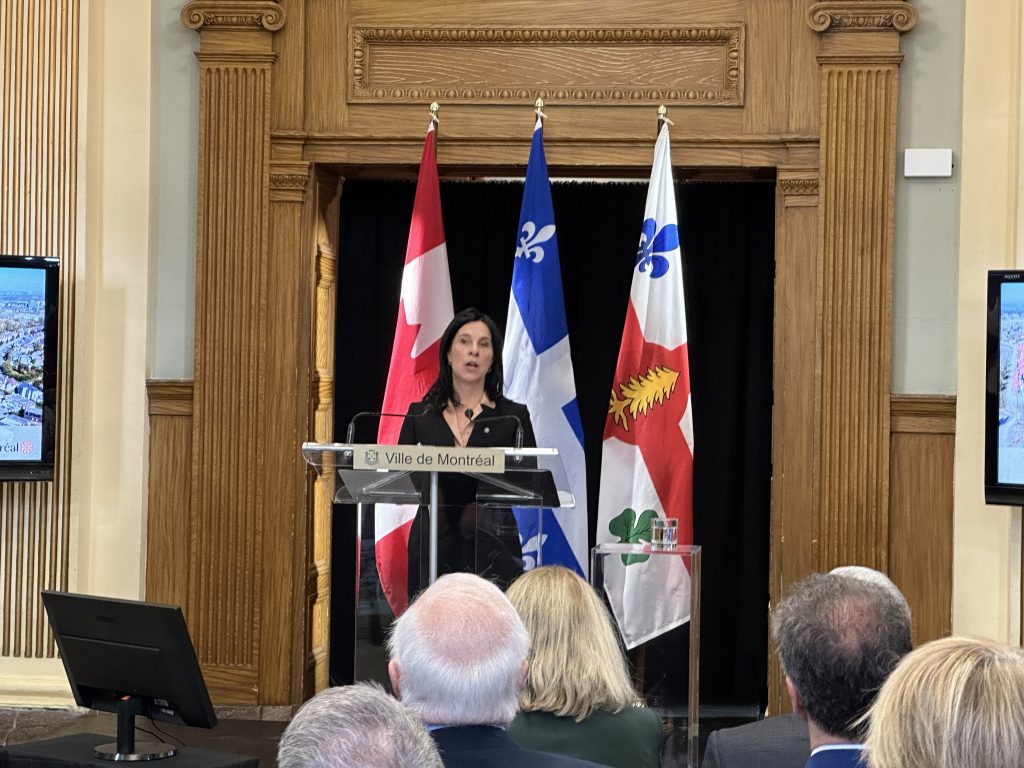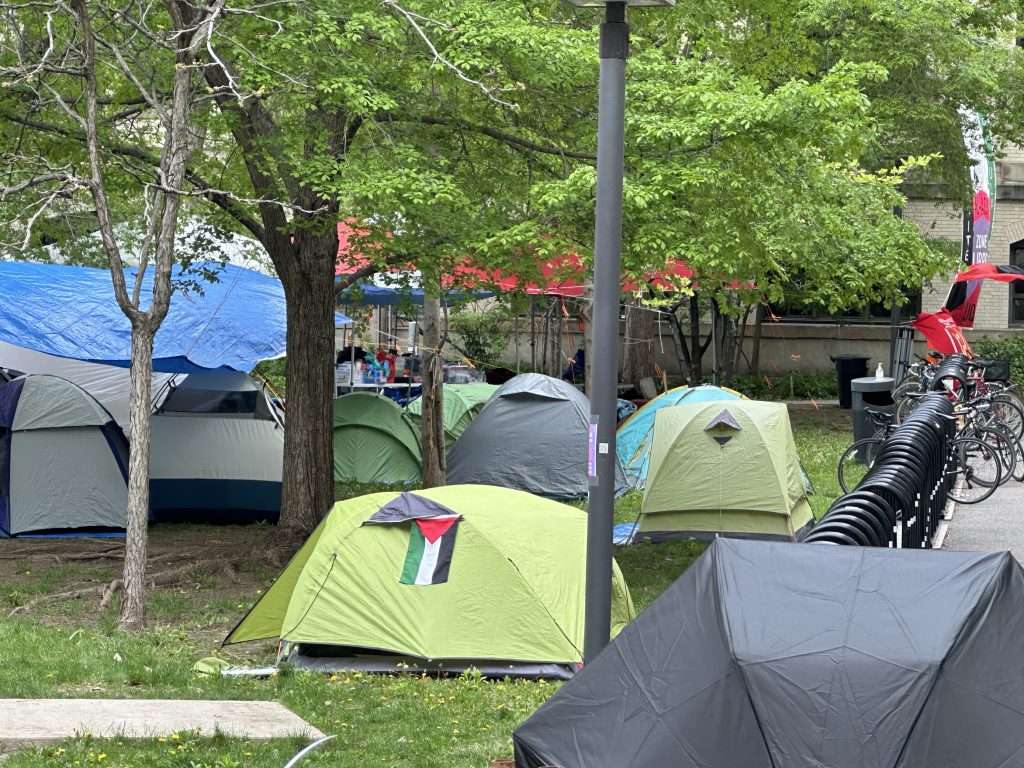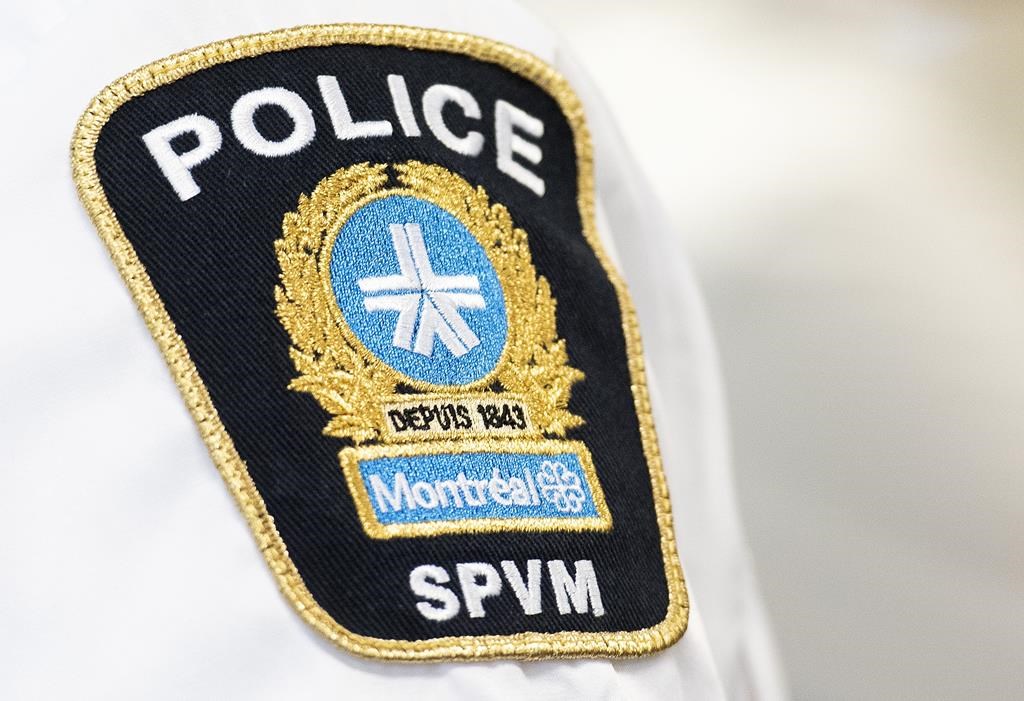Montreal unveils plans for Namur-Hippodrome area, with 20,000 housing units
Posted April 19, 2024 9:54 am.
Last Updated April 19, 2024 6:38 pm.
The city of Montreal wants to develop a brand-new living environment in the Namur-Hippodrome district and unveiled their plans on Friday.
In a press release, they explain that this will lay “the foundations for one of the most important urban development projects of the next decade,” in the Côte-des-Neiges-NDG borough.
Montreal mayor Valérie Plante said that she is proud of the project and wants the city to serve as an example for others around the world.
The future site was dedicated for more than 200 years to agriculture, then equestrian activities as the former Blue Bonnets raceway, later named the Montreal Hippodrome.
The new living environment will accommodate up to 20,000 housing units for a potential population of 40,000 people – “the equivalent of a new city rising up in the heart of the metropolis,” says the press release.
“We need to get going as quickly as possible,” said co-chair of the planning committee Pierre Boivin about the housing crisis and breaking ground on the Namur-Hippodrome project.
“Today we are taking a major step towards completing the Namur-Hippodrome eco-district,” she said in a press release. “It is also the result of several years of rigorous work with the community and local partners to imagine the transformation of a wasteland into a complete living environment that meets people’s aspirations: affordable housing, efficient modes of transport, local services and green spaces.”
The master plan calls for 10,000 homes to be built on the site of the former racetrack, representing a historic opportunity to transform the housing and property crisis into a real opportunity to improve the affordability of the city, reads the release.
Additionally, public transit network connected to the metro, a tramway line and paths for cyclists and pedestrians will be built there.
They will build 14 hectares of new parks and public spaces – “the equivalent to 20 soccer fields.”
There will also be a what they describe as a green belt to maintain biodiversity and combat heat islands. Along with a massive planting of trees and vegetation, and ecological water management.
“By owning and developing this land, we are seizing the opportunity of the century to make this new district a showcase for Montreal’s ambitions, particularly in terms of innovation, inclusion and citizen participation,” said Plante.
The area will include schools, a sports centre, library, and health centre, community and cultural facilities.
“This is a big deal. We’re investing now $2 million for the detailed plan that could lead to a project that will have potentially more than 10,000 non-market housing units. We’ve had a 30-year history in this country leading up to 2017, where in my view, governments of both conservative and liberal persuasions failed to make the investments necessary in affordable housing for low-income families outside of the market. We want to change that,” said Federal Housing Minister Sean Fraser.

“This plan is extremely promising for the people who already live in the area, because we want to green the neighbourhood, which is currently a major heat island, and plan the infrastructure needed to improve people’s quality of life, at a time when it lacks the community facilities to meet people’s needs,” said Côte-des-Neiges-NDG borough Mayor Gracia Kasoki Katahwa.
The opposition at city hall doubting the Plante administration’s ability to deliver on the plan.
“This announcement is really no announcement. It’s announcing that they’re going to spend $6 million more to make more studies. I have a big degree of question with regards to the capacity of the administration to actually make this happen,” said Saint-Laurent borough mayor with Ensemble Montréal Alan DeSousa. “It’s a big announcement 20,000 units, but every time they’ve had big announcements they’ve never been able to deliver.”
“I feel confident because the city’s not alone. And I’m surrounded, we’re surrounded, by the private sector – the builders, the non-for-profit sector that builds as well, to have the bank of infrastructure that’s interested supporting us and I know that they see the potential of this model that we are producing here, elsewhere in Canada,” said Plante.
Once adopted by the executive committee, the Namur-Hippodrome project will undergo a final public consultation, scheduled for May 2024, with the potential for a final adoption by the end of the year.
The city of Montreal is aiming to build the infrastructure within 10 years and will be ready to issue the first construction permits as early as 2025.



